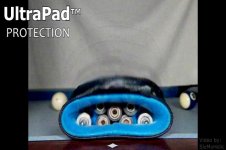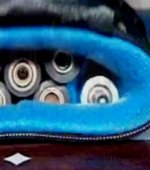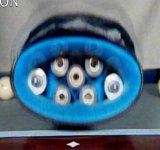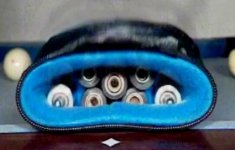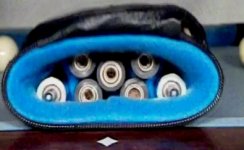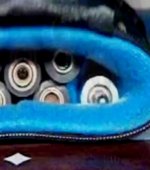Nice video.
It's pretty obvious how cues rattle around with little or nothing between them but a video like that drives the point home.
I noticed the case with tubes in it had some pretty monster size tubes in it. Really too large.
I picked up a Bentley 3x6 at the flea market for $50 a while back. It was in as new condition, only shelf wear. Tags still on it and keys still attached. Quite a deal. JB, I believe you saw that one on Skype.
It has tubes in it. The tubes actually hug the cues, the cues don't move. In fact putting a cue in and out meets with a little resistance. The shafts and butts are "hugged" in there. At first I felt they were too tight, but it was only because I wasn't used to a case that held cues so snugly. Because they are tubes I can't put any fat butt cues in there (like some of my antiques) but I generally wouldn't anyway.
It isn't the greatest case by any means. Clearly "cheap" with very cheap pigskin burgundy finished leather on it. But I like the case and it is serving well. I know that the seams will not hold up. When it finally gives up I will use the core of it to build a case with my own saddle stitched leather.
Anyway, very nice illustration of the advantages of some attention to liner construction.
Incidentally, my better box cases, and the one that I made, do not allow cue movement nor contact between butts and shafts etc, ever. Of course, they aren't as pretty as the tooled leather cases either.
.
.
It's pretty obvious how cues rattle around with little or nothing between them but a video like that drives the point home.
I noticed the case with tubes in it had some pretty monster size tubes in it. Really too large.
I picked up a Bentley 3x6 at the flea market for $50 a while back. It was in as new condition, only shelf wear. Tags still on it and keys still attached. Quite a deal. JB, I believe you saw that one on Skype.
It has tubes in it. The tubes actually hug the cues, the cues don't move. In fact putting a cue in and out meets with a little resistance. The shafts and butts are "hugged" in there. At first I felt they were too tight, but it was only because I wasn't used to a case that held cues so snugly. Because they are tubes I can't put any fat butt cues in there (like some of my antiques) but I generally wouldn't anyway.
It isn't the greatest case by any means. Clearly "cheap" with very cheap pigskin burgundy finished leather on it. But I like the case and it is serving well. I know that the seams will not hold up. When it finally gives up I will use the core of it to build a case with my own saddle stitched leather.
Anyway, very nice illustration of the advantages of some attention to liner construction.
Incidentally, my better box cases, and the one that I made, do not allow cue movement nor contact between butts and shafts etc, ever. Of course, they aren't as pretty as the tooled leather cases either.
.
.

